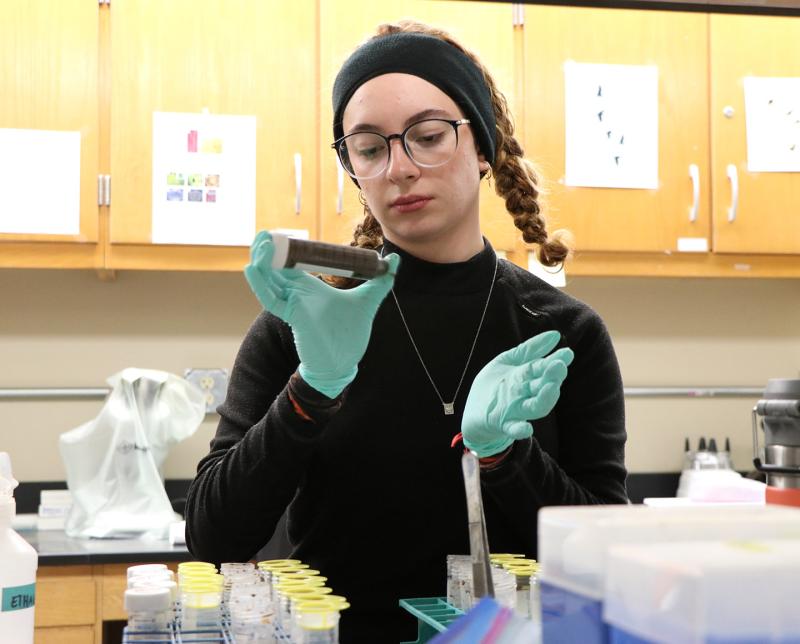by Chabella Guzman, PREEC communications specialist

Are there certain advantages old wheat varieties have over newer wheat varieties that are commonly grown today? This was a question presented to the University of Nebraska-Lincoln (UNL) High Plains Ag Lab (HPAL) specialists at a recent workshop.
“It was a grower’s question. They wanted to know the difference between old and new varieties. Some claim the old varieties have deeper roots and are more drought tolerant,” said Milena Oliveria, UNL post-doctorate research associate.
Wheat is sensitive to drought and heat stress, which are major environmental drivers affecting crop yields in the Panhandle, a semi-arid region. For decades, breeding for drought-tolerant wheat varieties has focused on above-ground traits, such as grain yield, disease resistance, or straw strength. Very little breeding has been done for below-ground traits due to the challenges associated with assessing those traits.
Daniel Schachtman, UNL professor and director of the Center for Biotechnology, is collaborating on the two-year trial with Oliveria, Cody Creech, Nebraska Extension dryland cropping specialist, and Amanda Easterly, Nebraska Extension dryland cropping systems. Schachtman visited the Panhandle in April to collect the first root samples at HPAL.
The project will investigate and identify differences among historical and new wheat varieties in terms of root growth, architecture, and their relationship with ecophysiological traits, biomass carbon allocation, belowground microbial community, and grain yield in a replicated field trial in western Nebraska. The April sampling included 12 genotypes in 60 samples pulled from 60 plots of old and new cultivars.
“We collected a number of different cultivars of wheat to get an understanding of what’s going on with the roots,” Schachtman said.
The study assumes older and taller cultivars will have increased root length to capture water and nutrients. Root samples will be collected at tillering and anthesis. Several (four to eight) adjacent plants per plot will be selected from an internal row based on their uniform size and the presence of neighboring plants.
“We’ll study the microbial bacterial communities inside and outside of the roots in rhizosphere soils and take them back to Lincoln (UNL) and extract DNA and sequence the 16 s, which is like a barcode to be able to tell the different bacterial taxonomy, in the samples,” Schachtman said.
Researchers will use the results of the study to give an answer to the question of old versus new wheat cultivars and how the root system plays a role in wheat yields. These answers will help provide key traits the UNL wheat breeding program can use to improve new cultivars in the future.